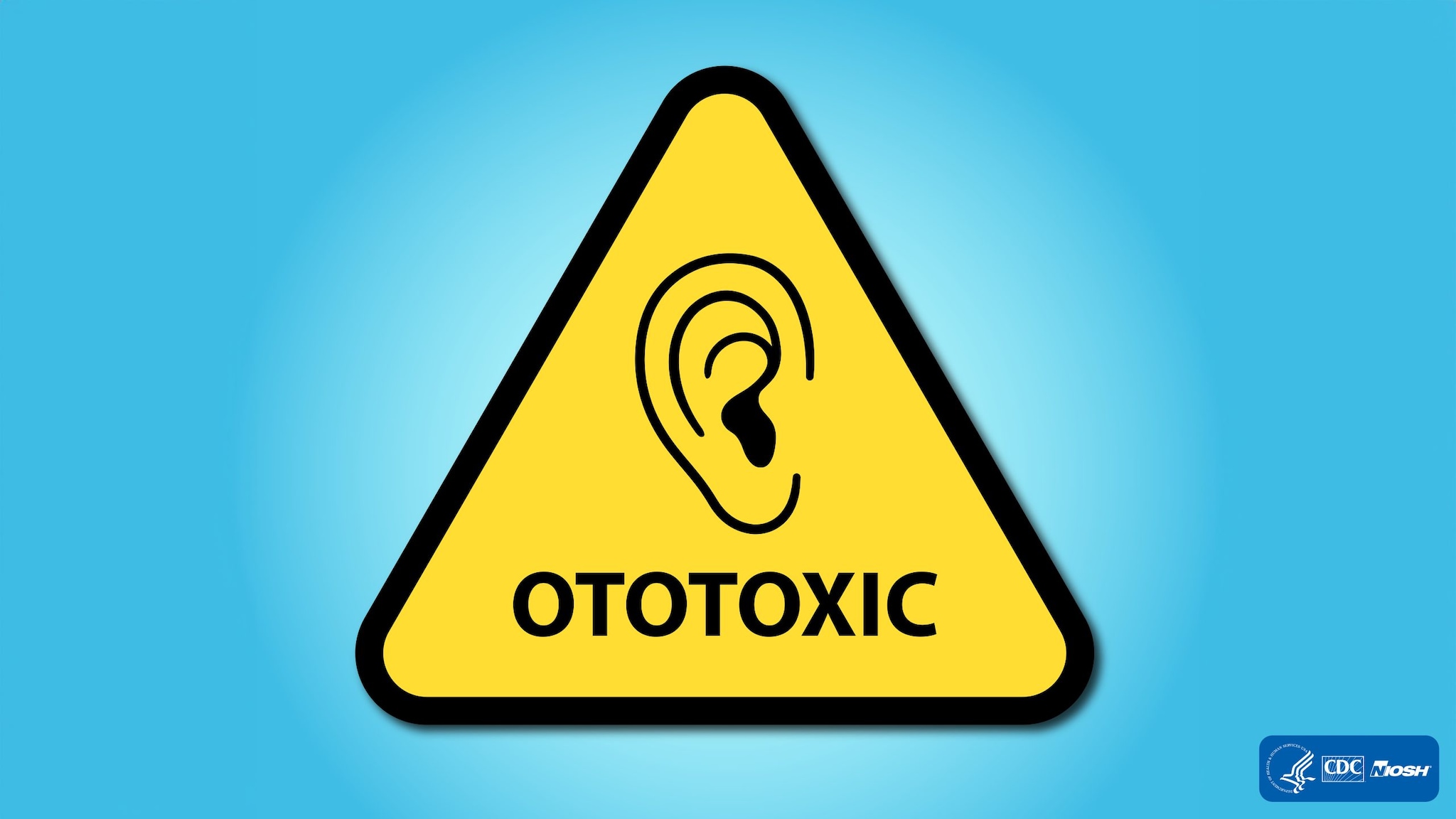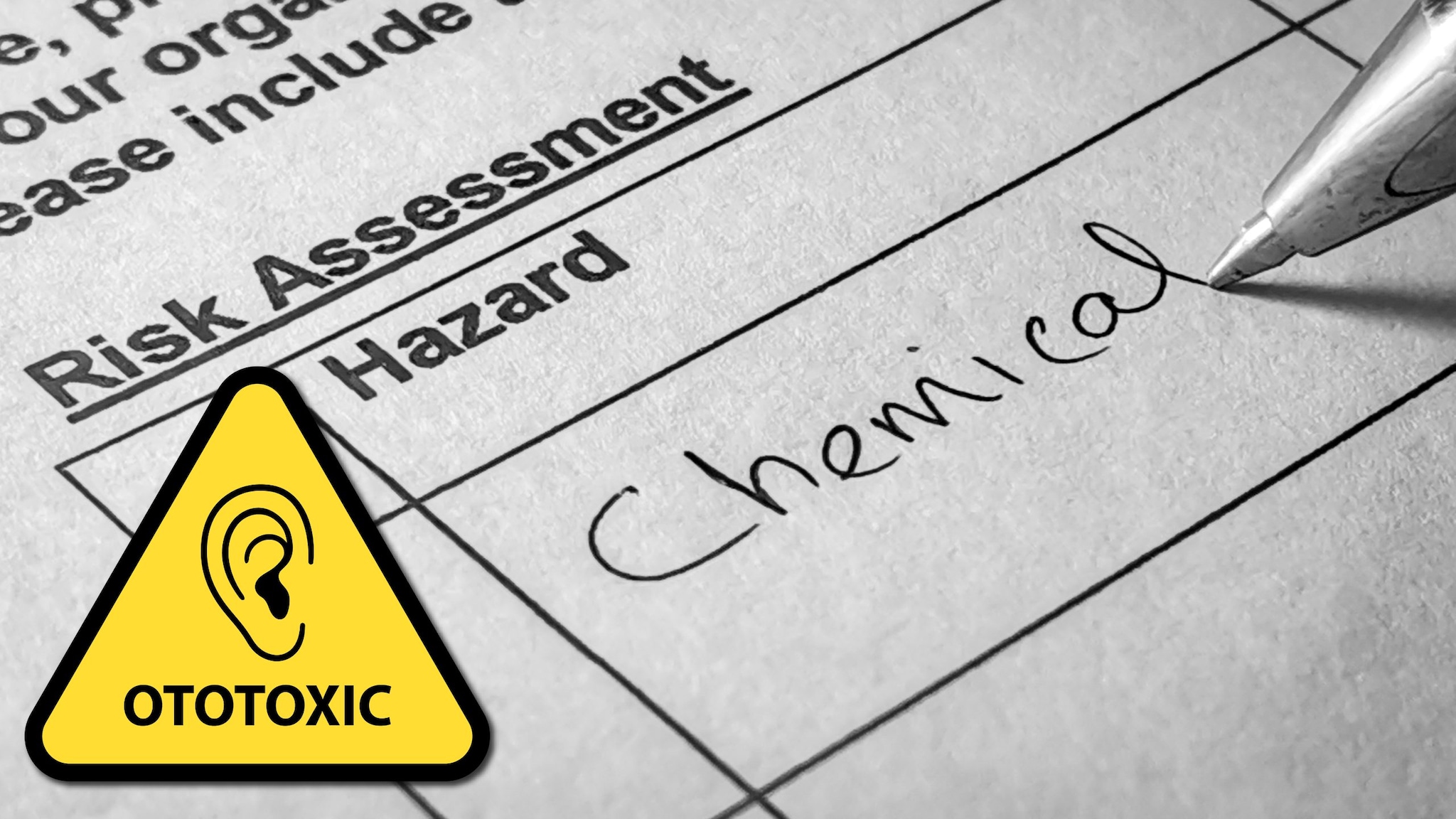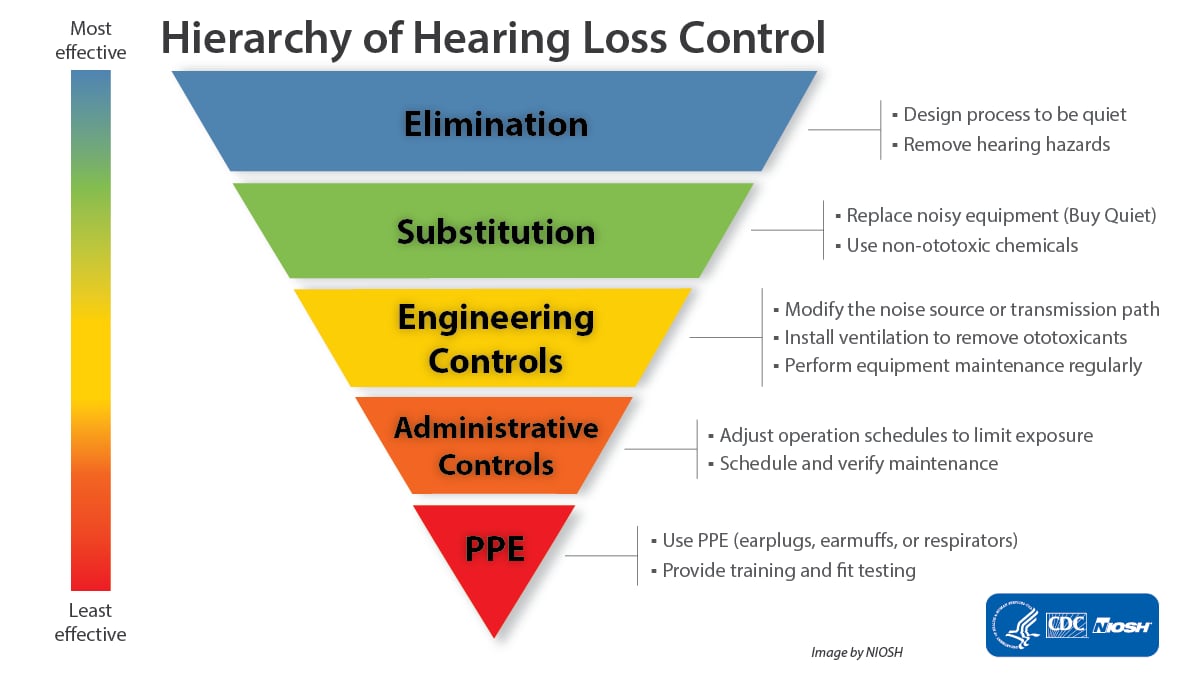At a glance
Exposure to certain chemicals at work can cause damage to different parts of the ear. These chemicals are called ototoxicants or “ototoxic chemicals.” Exposure to ototoxic chemicals can cause hearing loss. Sometimes, exposure to chemicals can make ears more sensitive to the harmful effects of noise.

How do ototoxicants work?

Like with noise, hearing loss caused by ototoxic chemicals varies based on:
- How often you are exposed (exposure frequency).
- How much you are exposed (chemical strength/potency).
- How long you are exposed (duration).
Exposure to workplace hazards such as noise and other individual factors also influence the effect of chemicals that damage hearing. Individual factors may include elements such as age or smoking status.
Examples of chemicals that damage hearing
- Solvents
- (e.g., toluene, styrene, xylene, ethylbenzene, and trichloroethylene)
- (e.g., toluene, styrene, xylene, ethylbenzene, and trichloroethylene)
- Metals and compounds
- (e.g., mercury compounds, lead, and organic tin compounds)
- (e.g., mercury compounds, lead, and organic tin compounds)
- Asphyxiants
- (e.g., carbon monoxide, hydrogen cyanide and its salts, tobacco smoke)
- (e.g., carbon monoxide, hydrogen cyanide and its salts, tobacco smoke)
- Nitriles
- (e.g., 3-butenenitrile, cis-2-pentenenitrile, and acrylonitrile)
- (e.g., 3-butenenitrile, cis-2-pentenenitrile, and acrylonitrile)
- Pharmaceuticals
- (e.g., certain antineoplastic drugs)
- (e.g., certain antineoplastic drugs)
- Pesticides
Workers can be exposed to these chemicals in different ways
- Breathing them in
- Consuming food or drinks that have been contaminated
- Absorbing chemicals through the skin by touching them
Once someone is exposed, chemicals can travel through the blood stream. Then the chemicals injure the inner ear and damage the nerves that transmit information to the brain.
Preventing ototoxic exposure
How employers and safety professionals can prevent ototoxic chemical exposure

Use the hierarchy of controls to prevent hearing damage among employees:
- Understand how to use the hierarchy of controls.
- Avoid using ototoxic chemicals in the workplace when possible.
- Replace ototoxic chemicals with less toxic chemicals.
- Improve ventilation.
- Train workers to safely handle chemicals.
- Supply personal protective equipment (PPE) to workers.
- Train workers to use PPE correctly.
Exposure limits for many chemicals were set without specifically considering ototoxicity. Some exposures may create a hearing risk at levels below existing guidance, especially when combined with noise exposures. Review the OSHA-NIOSH Safety and Health Information Bulletin to learn more on preventing ototoxic chemical exposure and keep your workers safe.
How workers can prevent ototoxic chemical exposure
If you work with any chemicals, take the following actions to help protect yourself:
Learn if a certain chemical may contribute to hearing loss or other hearing damage. Find information under the “Health Effects” chapter of a chemical’s Toxicology Profile.
Wear clothing and protective equipment as needed. Gloves resistant to the chemical(s) of concern, long sleeves, eye protection.
Wear a properly selected respirator, as appropriate.
Industries that are most likely to use ototoxic chemicals
- Manufacturing, which may include:
- Fabricated metal
- Machinery
- Leather and allied product
- Textile and apparel
- Petroleum
- Paper (including printing)
- Chemical (including paint)
- Plastics and rubber products
- Furniture and related product
- Transportation equipment (e.g., ship and boat building)
- Electrical equipment, appliance and component (e.g., batteries)
- Solar cell
- Fabricated metal
- Mining
- Oil and gas extraction
- Utilities
- Construction
- Agriculture
- Public safety
- Specialty trade contractors
- Non-store retailers
- Small stores (sporting goods, hobby, books)
- Amusement, gambling, and recycling industry waste management. and remediation services
Being exposed to both loud noise and ototoxic chemicals can cause more hearing damage than either noise or chemical exposure by itself. Job activities with exposure to both chemical and noise hazards may include:
- Printing
- Painting
- Construction
- Manufacturing jobs in the industries listed above
- Fueling vehicles and aircraft
- Firefighting
- Weapons firing
- Pesticide spraying
